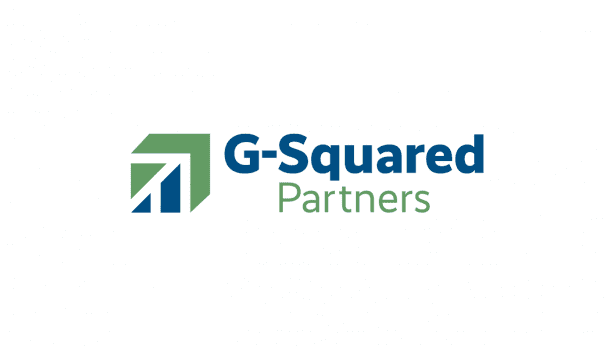G-Squared Partners: 8 Sales Forecasting Methods to Improve Your Current Projections

This is a guest blog post from our friends at G-Squared Partners. As an entrepreneur or small business owner, making and updating financial forecasts is like brushing and flossing your teeth twice a day. You know you should do it. You know bad things are likely to happen if you do not do a thorough job. But it is not at the top of your to-do list, so you pay less attention to it than you should.
At the risk of carrying the metaphor too far, just as neglecting your brushing and flossing routine can lead to gum disease linked to diabetes, heart disease, and stroke, dismissing your forecasts can ultimately lead to severe problems– like your business running out of cash.
In this article, G-Squared Partners offer 8+ recommendations for improving your forecasts. Even though it may never be as enjoyable as other things you do for your business, if you make solid, regular forecasts, it will have many benefits and help keep things on the right path. Let’s get started.
Forecasting sales
It is fair to say that if you do a thorough job forecasting sales, most of the other things in a forecast will fall into place. In other words, this is where your efforts make the most significant difference, so this is where we focus our recommendations. Here are some key things to help you in forecasting sales, provided by G-Squared Partners:
1. Accept that your sales forecast for the next 12 months will be wrong from the get-go.
That is expected unless you have a functioning crystal ball, but it does not mean you can “wing it.” Comparing an uncertain but thoughtful forecast to what happens provides valuable insights. Measure how much your forecast was off and in which direction, and use that feedback to update the forecast for the rest of the year. Collecting data on the “mistakes” will inform the process in the future.
Read More: Cash Flow 101: Tips for Management, Projection, and Long Term Improvement
2: Your sales forecasts are likely to be overly optimistic.
Why? Because entrepreneurs tend to be optimistic (you probably would not have started a business if you were a glass-half-empty person). Most business owners can do a reasonable job of predicting sales for the next quarter, but beyond that, their forecast often looks more like a “best-case scenario.”
It usually takes several years of missing annual sales targets to realize those sales forecasts are consistently too rosy and turn optimistic forecasts into something more realistic.
3. To forecast sales, you need to understand your sales productivity; you need the right KPIs to measure that.
As a business owner, you know how essential flexibility is to the success of your company. The state of a startup can change at any minute, so your resources need to be flexible enough to keep up.
For direct sales, that may be the percentage of proposals resulting in sales and those contracts’ dollar value. For an e-commerce business, it might be the conversion rate, i.e., the percentage of visitors to your website that makes a purchase and the average sale per customer.
Collect this data, analyze it and use it going forward – that will significantly improve your sales forecasts.
4. In sales, history does not necessarily predict the future.
History offers a starting point. Look at each salesperson’s quota and the portion of that quota they typically fill in a given quarter. For example, if the average sale in your business is $250,000 and the salesperson’s quota = $1.5 million, that means they need to close six deals per year. How many of those sales typically come in during Q1, Q2, Q3, and Q4? Is seasonality a factor in your industry?
Many businesses see a summer slow-down because many of their target customers are on vacation; this is often the case for enterprise software sales, given the number of people involved in making a decision. Also, be aware of how any supply chain disruptions are likely to affect the timing of sales in the coming months. As the year progresses, check to see whether historical patterns are holding up. If not, find out why and revise your forecast.
5. If your business relies on direct sales, include salesforce turnover in your forecast.
Depending upon your industry and the economy, you may lose up to 25% of your salespeople over 12 months. Replacing them will take time, causing total sales to slow. Similarly, do not forecast a jump in sales right after you expand your sales team – there will be a ramp-up period before a new salesperson reaches your sales targets.
Also, assume that the hiring process will take longer than you think and that 25% of new salespeople will not work out. A sales forecast must be consistent with the sales team you can realistically expect to have in place.
6. Consider whether you should incorporate price increases in your sales forecast.
Some annual contracts include an automatic increase to cover inflation – this is relatively common in the software industry. Most businesses will need to decide whether to absorb increases in operating expenses, such as higher salaries and rent or raise prices. The former will hit your profit margin; the latter may cause customers to look elsewhere. You may choose to do some of both.
Gather whatever information you can about trends in your industry instead of just assuming you have to absorb higher costs; if your competitors are raising prices, you have more room to do the same.
7. Sales forecasts are particularly challenging when releasing a new product or selling through a new distribution channel, but you have to start somewhere.
Focus on the simple fact that: Price x Quantity = Sales
In other words, you can hit a sales target with a small number of large dollar sales or a large number of small-dollar sales. What are reasonable expectations for price and quantity, given the product and the market niche? Even if there are no direct competitors for a new product or service, what is your potential buyer’s spending on the substitutes they are currently using?
As you start to gain experience with actual sales, update your forecast based on where your original estimate was “off” in terms of price or quantity.
8. Remember to incorporate customer retention.
Use historical data to measure this wherever possible – having a year’s worth of data is best. For example, if your retention rate is 90%, you will need to increase sales by roughly 11% versus last year just to stay even. While bringing in new customers is rewarding, it can be even more profitable to invest in improving your client retention rate to hold onto the revenue those clients represent.
Analyze cancellations for patterns and use what you learn. Better yet, stay in touch with your customers, show them you value their feedback, and want to address their “pain points” with respect to using your product or service.
Read More: 3 Integral Factors For Measuring The Value Of Your Customers
Forecasting Cost of Goods Sold and Expenses
Expenses are either fixed (such as rent) or variable. Fixed costs are known (at least for the next 6-12 months). Modeling variable costs is relatively straightforward once you have your sales forecast in place. This is another reason it is so important to do the best you can with a sales forecast, predicting expenses, and therefore cash flow and profit margins depend on it.
Concerning forecasting the Cost of Goods Sold, be in touch with your suppliers to understand what cost increases they may be facing.
Uncertainty and Communication
There is uncertainty in every aspect of a sales forecast (that is why we started by saying your forecast will be wrong). To cope with this uncertainly, update your forecasts often and communicate changes to those who need to know. If your prediction was too optimistic and you continue to spend cash at the average rate, putting off telling your Board that missed sales are not going to be recovered in a few months, you are creating an enormous unforced error.
As the CEO, be sure your CFO is not burying bad news. Every month, make a Budget-to-Actual comparison and track where you were off in terms of sales and expenses. At mid-year, re-forecast the remainder of the year. Early-stage companies risk running out of cash by neglecting this. More established companies risk violating bank covenants or putting bonuses at risk because sales growth and customer retention targets are missed, creating dissatisfaction among employees.
G-Squared Partners recommend that companies bring an early preliminary budget to the Board in early Q4 to get feedback. Then, use that feedback to prepare a final budget. If your Board pushes you to make a rosier sales forecast, counter that with the data you used to make your projections.
If you are looking to raise capital or sell your business, your forecasts should be aspirational. Still, you need to hit your numbers during the period you are marketing your business and for at least a few quarters after that. The “fake it ’til you make it” mentality may appeal to some, but your relationship with investors will sour if you do not inject some realism into the process.
It does not help to have unbridled enthusiasm about the future and create an unrealistic sales forecast only to run out of cash a few months later.
If making thorough forecasts seems like a daunting task, G-Squared Partners can help. As your outsourced CFO, we can generate your forecasts, collect the data needed to define your KPIs, analyze budget versus actuals, and put the results to work for you. Contact us or book a meeting to discuss your company’s needs.
Check out another G-Squared Partners article about Cash Flow Projections HERE





